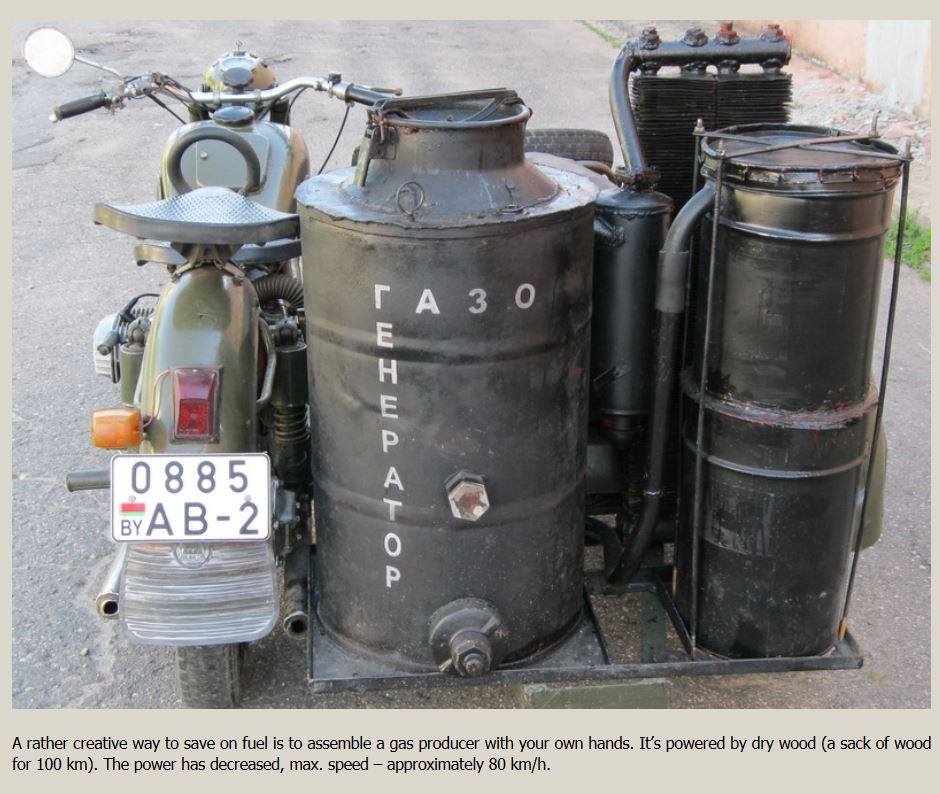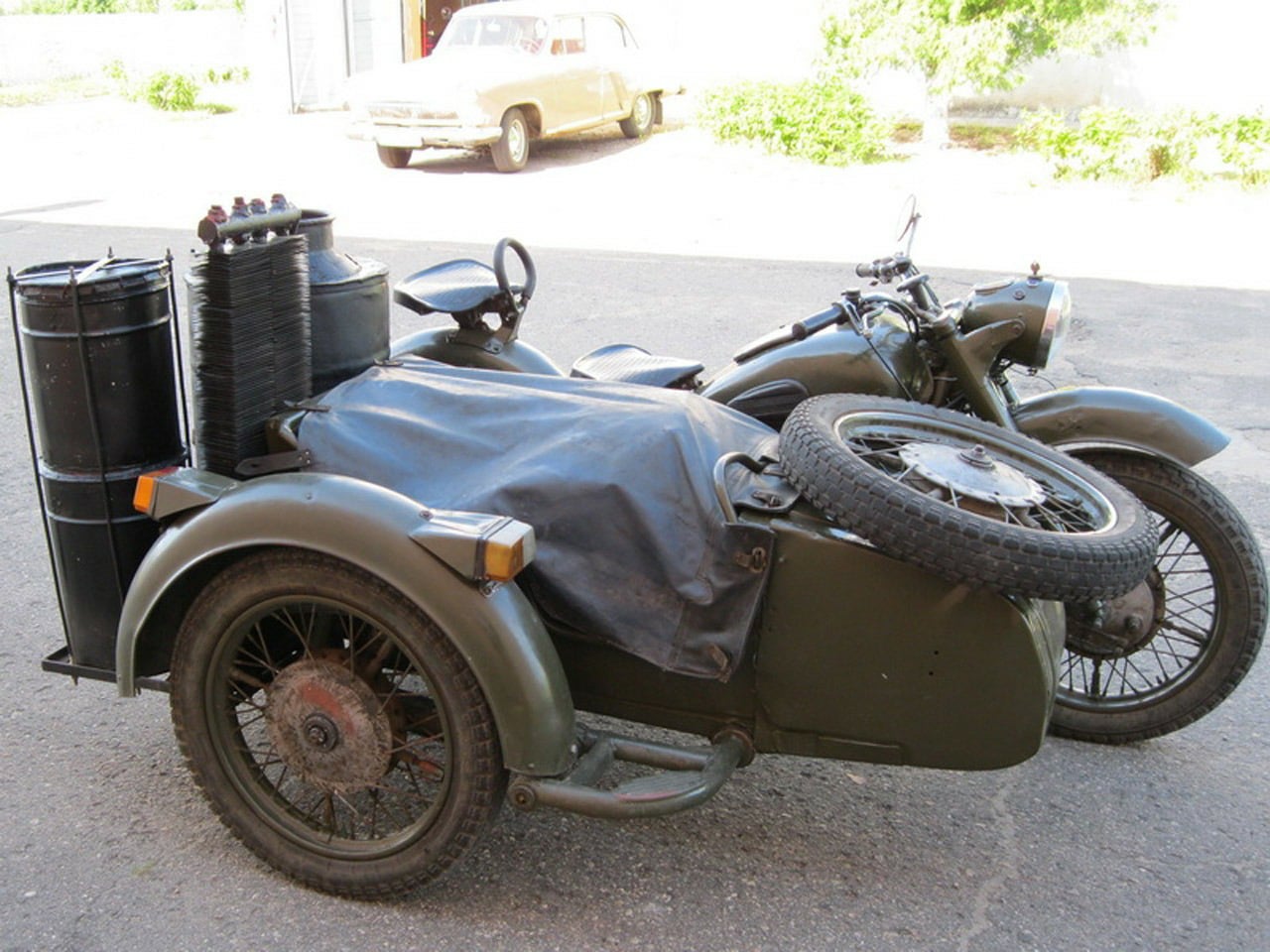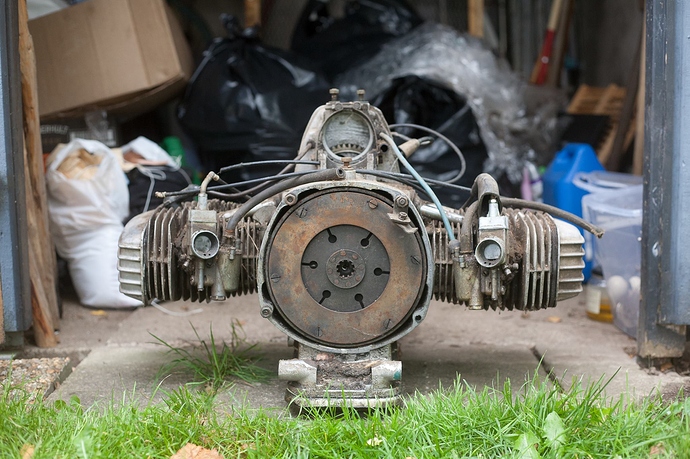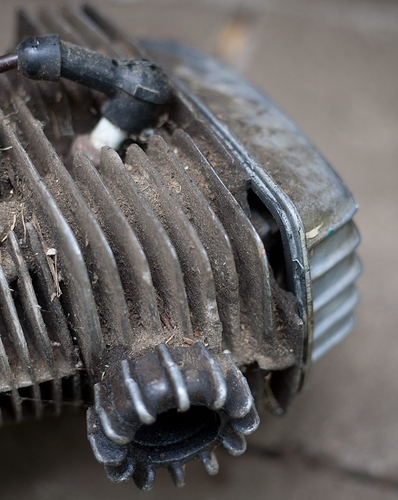Hehe, in Sweden we have a saying, swearing in church… when you do or say something highly inappropriate. I believe I might have done just that with my last post.
I’ll fix some photos for you the next time I’m out by the farm. Might take a while but you’ll get them sooner or later.
I have a 1964 IMZ(Ural) M62 with a drive line from a later KMZ(Dnepr) motorcycle. 650cubic centimeter engine, boxer lay out. With the original sidecar it weights around 350 kg without passengers, spare wheel and so on. The hauler sidecar is lighter, it only weights around 90 kg.
This bike I have now probably won’t be running on charcoal in the future. I intend to get another one, and use that as a experimental frame, ethanol, wood gas and so on.
Tilman, funny that you mention those vehicles. This bike is just like those two. Different models, but much the same! Have a some pictures of the Ukranian KMZ you mentioned. 
These are not my picture, I hope that’s alright, they serve as inspiration. All of these bikes are based on the same platform. My hopper is roughly the same size as these ones.

29792179_2059658124304305_3873118185873530723_n|662x500
Pontus














